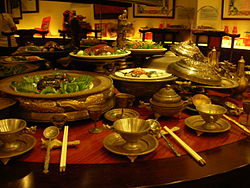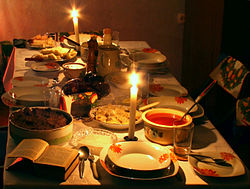
This is a list of historic and contemporary dining events, which includes banquets, feasts, dinners and dinner parties. Such gatherings involving dining sometimes consist of elaborate affairs with full course dinners and various beverages, while others are simpler in nature.












